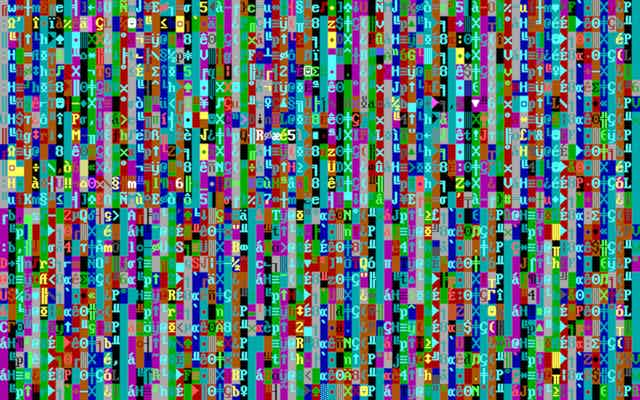Computer viruses now have their own museum. The recently opened online Malware Museum exhibits samples of early viruses that often include amusing graphics or popular culture references. But the significance of viruses goes beyond funny curiosities from the 1980s and 1990s.
The practice of creating viruses became an important subculture and part of new sorts of cultural activities, practices and interests. We too often think that all malware is by necessity just vandalism or criminal activity. The actual skills of coding them – even with simple scripts – may be just a hobby for some but an art form for others. And viruses themselves are cultural objects that tell the story of contemporary security.
Exhibits in the Malware Museum, which is based on the personal collection of the prominent Finnish viruses researcher Mikko Hyppönen, demonstrate how viruses in the 1980s and 1990s crystallised both cultural stories and fears. One program that displayed the word’s “Frodo lives” on an infected computer’s screen referred directly to the character from Tolkein’s The Lord of The Rings. But it was also a nod to a phrase made popular during the hippie era, reflecting the influence of 1960s counterculture on the nascent tech scene.

The name of the “Skynet” virus, meanwhile, is a reference to the Terminator films. But it also gives a perhaps tongue-in-cheek reminder of the possibility of artificial intelligence one day surpassing and subjugating or destroying humanity. In this way, computer viruses almost provide their own version of speculative science fiction. They have even been discussed in research on the possibility of creating artificial life.
The way computer viruses were portrayed in the 1980s and 1990s also reflected contemporary concerns about HIV and AIDS. The fear of computer viruses spreading through digital contagion was similar to a fear of touch in many discussions of the era. In the late 1980s, some warned that “[viruses] might do to computers what AIDS has done to sex”, and computers had to have their own prophylactics and guidance for safe use.

Into the mainstream
The cultural significance of malware and its potential for creativity has also infected the more mainstream art world over the last couple of decades. Artists such as Joseph Nechvatal incorporated viral code into new forms of digital painting to infect and break down the images produced. Associated avant-garde art techniques of randomness and variation became part of digital visual culture.
The custom-programmed Biennale.py virus was released on disc by the Slovenian Pavilion of the 2001 Venice Biennale. This was not a work of malice but an investigation into how contagion works as part of computer culture and the art world. As well as appearing in viral digital format, the source code was sold on printed t-shirts and CD-ROMs, demonstrating how the commercial art world can turn even potentially malicious software into a saleable commodity. In doing so, the little piece of code also became a socially contagious object in the art market.
Many net and software art projects dealing with viruses have attempted to debate digital security, and in many cases asked how malware is related to issues of privacy and control. Hacker-artist Luca Lampo, for example, has suggested that the fear of computer viruses and other “monsters” of digital culture was part of a longer history of projected (Western) fears, replacing previous monsters such as Soviet Russia.
Today we have seen a shift from malware being written predominantly by individuals and hobbyists to its development by organised criminals and state agencies, who are less interested in seeing their creations as art or cultural objects. The most famous piece of malware of recent years is probably the Stuxnet worm, which was discovered in 2010 and targeted Iranian nuclear infrastructure and was supposedly programmed with American-Israeli support.
This kind of state-sponsored malware compromises security on a wider scale than individual pieces of viral code. As such, information leaks, insecure websites and state surveillance have become a bigger social concern than annoying home-made viruses, particularly discussed after the revelation by Edward Snowden that governments capture and process bulk internet and other data from their citizens.
Artworks such as Holly Herndon’s Home song and music video directed by Metahaven describe how our personal relationship with digital culture has been compromised by this kind of surveillance and hacking. Modern cyber warfare has made us vulnerable to a multitude of technical attacks, including the ones designed by our own governments. The malware museums of the future will have to include the extensive measures taken by state intelligence agencies in the name of cyberdefense, with civilian casualties included. The problem is much of that data is likely to be secret, stored in the data centres and server farms of government agencies.

